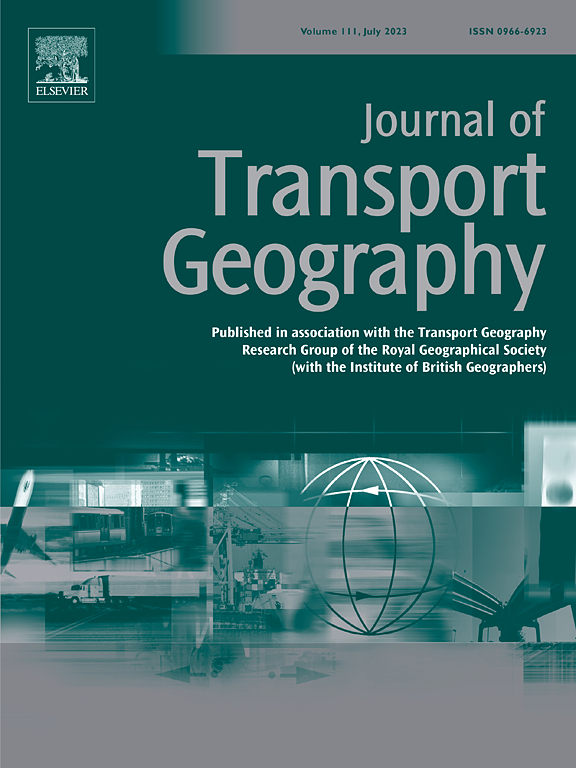通过自行车交通协同效应减少工作可达性方面的不平等
IF 6.3
2区 工程技术
Q1 ECONOMICS
引用次数: 0
摘要
本研究探讨了如何将自行车作为公共交通的入口和出口选择来改善中等城市地区的工作可达性。报告还评估了这种协同效应与现有旅游选择相比的表现,并探讨了其对减少该地区可达性不平等的影响。利用空间分析,对挪威一个中等城市地区的潜在工作可达性水平进行了四种出行选择:汽车、公共交通、自行车和自行车交通协同。模态可达性差距指数是用来显示这些出行方式所提供的可达性水平的差异。此外,利用洛伦兹曲线和基尼指数对每个旅行选择的水平公平性进行了评估。垂直资产净值也用Suits指数、帕尔马比率和百分位比率来评估。结果表明,与汽车相比,自行车交通的协同效应在该地区提供了更公平的工作可达性分配,尽管后者提供的可达性水平明显更高。这些好处在城郊地区更为明显,在那里,一体化显著提高了交通最不便地区的可达性。然而,在工作集中的城市核心和公共交通质量较差的农村地区,福利较低。研究结果表明,虽然自行车交通的协同效应是有益的,但它本身并不能解决现有汽车提供的工作可达性水平的差距,这加强了对综合交通和土地利用规划方法的需求。调查结果还强调,需要考虑其他旅行选择以及不同的公平定义,以便进行更连贯的运输公平分析。本文章由计算机程序翻译,如有差异,请以英文原文为准。
Reducing inequalities in job accessibility through bike-transit synergy
This study investigates how integrating bicycles as access and egress options to public transport can improve job accessibility in mid-sized urban regions. It also evaluates how this synergy performs compared to existing travel options and explores its impact on reducing accessibility inequalities in the region. Using spatial analysis, potential job accessibility levels of a mid-sized urban region in Norway are estimated for four travel options: car, public transport, bicycle, and bike-transit synergy. The Modal Accessibility Gap index is derived to show disparities in accessibility levels provided by these travel options. Additionally, horizontal equity for each travel option is evaluated using the Lorenz curves and Gini index. Vertical equity is also evaluated using the Suits index, the Palma ratio, and the Percentile ratio. The results indicate that bike-transit synergy offers a fairer distribution of job accessibility in the region compared to the car, despite the latter offering significantly higher accessibility levels. These benefits are more pronounced in peri-urban areas, where the integration significantly enhances accessibility in the least accessible areas. However, the benefits are lower in the urban core, where jobs are concentrated, and in rural areas, where public transport quality is poor. The findings suggest that while bike-transit synergy is beneficial, it alone cannot resolve gaps with existing job accessibility levels provided by the car, reinforcing the need for an integrated transport and land use planning approach. The findings also highlight the need to consider alternative travel options as well as different equity definitions for a more coherent transport equity analysis.
求助全文
通过发布文献求助,成功后即可免费获取论文全文。
去求助
来源期刊

Journal of Transport Geography
Multiple-
CiteScore
11.50
自引率
11.50%
发文量
197
期刊介绍:
A major resurgence has occurred in transport geography in the wake of political and policy changes, huge transport infrastructure projects and responses to urban traffic congestion. The Journal of Transport Geography provides a central focus for developments in this rapidly expanding sub-discipline.
 求助内容:
求助内容: 应助结果提醒方式:
应助结果提醒方式:


